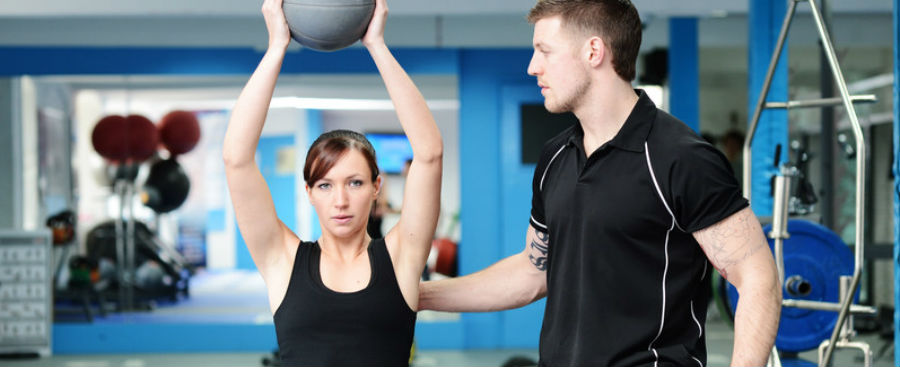 By Emily Sopo, Special AFS Contributor
By Emily Sopo, Special AFS Contributor
Ever heard the sayings, “Everything in moderation” and, “Less is more,” in relation to exercise? Although exercise is clearly beneficial to our health and well-being, it is true that sometimes, too much of a good thing can be harmful to our health and performance.
This is the concept of overtraining, a condition in which training too frequently or too intensely causes decreased exercise performance and increased illness or injury. This post will explore how we overtrain, signs and symptoms of overtraining, treatment of overtraining, and how to prevent overtraining.
How We Overtrain
When we increase our training frequency (how long and how often we train) or intensity (how hard we work) too quickly in our training program, our bodies don’t have time to appropriately adapt to the stressor that is exercise. We can overtrain our entire body or a certain muscle group – either way, the best solution is usually rest.
Signs & Symptoms of Overtraining
Keep in mind that how our body responds to training is very individual. A single training program might perfectly progress one person while causing overtraining in another. That is why it is very important for us to understand the signs and symptoms of overtraining.
Signs of aerobic/cardiorespiratory overtraining and resistance overtraining include (National Strength and Conditioning Association, 2012):
Aerobic/Cardiorespiratory Overtraining Symptoms:
- Decreased aerobic performance
- Earlier onset of fatigue
- Increased muscle soreness
- General malaise (not feeling so hot)
- Loss of interest or enthusiasm for training
- Disturbed psychological mood states (increased depression, anxiety, fatigue, or decreased vigor)
Resistance Overtraining Symptoms:
- A plateau followed by a decrease in strength gains
- Disturbed sleep
- Mood changes
- Decrease in lean body mass (when not dieting)
- Decreased appetite
- Persistent cold or flu-like symptoms
- Loss of interest in training
- Excessive muscle soreness
You may also be able to detect signs of aerobic/cardiorespiratory overtraining based on your heart’s response to exercise. Here are a few things to look out for when you’re exercising with a heart rate monitor, such as MYZONE®:
- Your rate of perceived exertion (RPE) doesn’t align with the heart rate zone you’re in. You might feel like you’re pushing an 8 or 9 out of 10, but your heart rate monitor says you’re in in a lower-intensity zone.
- Your heart rate recovers more slowly than normal following a bout of higher intensity exercise. With overtraining, your heart rate might remain in the higher zones for a little longer.
- You can’t control your heart rate response to exercise as much as usual. For example, your heart rate may increase much faster than you’re used to.
Treating Overtraining
Once you have already overtrained, the key is to rest. The longer you’ve overtrained, the longer the rest period you’ll need. It is recommended that you take a full recovery for at least a few days, if not longer. It’s important to remember that your health is most important and complete rest will help you to improve your health and fitness long-term.
While training leads to awesome aesthetic effects, our health comes first. When the pursuit of a particular physical appearance overshadows the numerous other benefits of exercise, it can lead to obsessive behaviors and pushing our bodies beyond healthy limits.
When you begin exercising after a period of recovery from overtraining, start slow and listen to your body. Begin training at a lower volume or intensity (or both) than you’re used to. Eventually, you can increase your volume and intensity. However, be mindful that there is a reason you overtrained in the first place – you will need to increase the variables more slowly than you previously did.
Preventing Overtraining
How can we prevent overtraining in the first place? Here are a few tips:
Use a Periodized Training Program
Periodization consists of cycling intensity and volume in your training program to reach optimal performance and prevent overtraining. A periodized program will include higher-intensity workouts and lower-intensity workouts. To learn about developing a periodized program, consult with a personal trainer.
Make Health Your First Priority
While training leads to awesome aesthetic effects, our health comes first. When the pursuit of a particular physical appearance overshadows the numerous other benefits of exercise, it can lead to obsessive behaviors and pushing our bodies beyond healthy limits.
Eat Healthfully & Eat Enough
It’s vital that you are fueling and refueling your workouts properly, as overtraining may be aggravated by depleted carbohydrate stores (Katch, McArdle, & Katch, 2011). Reach out to a registered dietitian with expertise in sports nutrition for additional information.
Hydrate
The American College of Sports Medicine (2011) recommends hydrating before, during and after exercise. The recommendations are as follows:
- Before Exercise: Consume 16-20 fluid ounces of water or sports beverage at least four hours before exercise; drink 8-12 fluid ounces of water 10-15 minutes before exercise
- During Exercise: Drink 3-8 fluid ounces of water every 15-20 minutes when exercising for less than an hour; drink 3-8 fluid ounces of a sports beverage (5-8% carbohydrate with electrolytes) every 15-20 minutes when exercising longer than one hour
- After Exercise: Replenish the fluid you lost via sweat within two hours following exercise; drink 20-24 fluid ounces of water or sports beverage for every pound of bodyweight lost during the exercise session
Get Enough Sleep
The National Sleep Foundation recommends that adults get about 7-9 hours per night (Hirshkowitz et al., 2015). The exact number may vary with age and other factors.
Aim for Balance
There are many aspects of wellness aside from our physical wellness - interpersonal, financial, and spiritual – to name a few. If one aspect is lacking, it can affect the others and may impact our physical health. Try to seek balance in the many areas of wellness in order to set your physical wellness up for success.
To conclude, remember to listen to your body. A training volume and intensity that works for one person may not work perfectly for you, so find a training rhythm that fits your needs and goals in a healthy way. If you are experiencing symptoms of overtraining, take rest periods and seek medical attention if symptoms persist.
Find out more about MYZONE and their special 2 months of FREE licensing for AFS members!
Emily Sopo loves sharing her passion for health and wellness as a personal trainer, facility assistant director and fitness educator. Since Emily started teaching group exercise classes six years ago, she has immersed herself in the fitness industry. She has experience in several formats of group fitness, personal training, management, and teaching. Emily is a certified personal trainer through the National Academy of Sports Medicine and a certified group exercise instructor through the Aerobics & Fitness Association of America.
In 2015, Emily graduated from California State University, Long Beach, with her Master of Science in Kinesiology, Exercise Science. She is now the Assistant Director of the LifeFit Center @ The Beach, a health and fitness facility geared toward adults 49 years and older. Emily is also a Master Trainer with MYZONE®, and a certified IN-TRINITY® instructor, and a 2016-2017 PTA Global Ambassador.
--
References:
Hirshkowitz, M., Whiton, K., Albert, S.M., Alessi, C., Bruni, O., DonCarlos, L., … Hillar, P.J.A. (2015). National Sleep Foundation’s sleep time duration recommendations: methodology and results summary. Journal of the National Sleep Foundation, 1(1), 40-43.
Katch, V.L., McArdle, W.D., & Katch, F.I. (2011). Essentials of exercise physiology (4th ed.). Baltimore, MD: Lippincott Williams & Wilkins.
National Strength & Conditioning Association (2012). NSCA’s Essentials of Personal Training (2nd ed.). Coburn, J.W., & Malek, M.H. (Eds.). Champaign, IL: Human Kinetics.
Simpson, M.R., Howard, T. (2011). Selecting and effectively using hydration for fitness. Retrieved from https://www.acsm.org/docs/brochures/selecting-and-effectively-using-hydration-for-fitness.pdf


Join the Conversation!